Design of Optimized Energy Management Strategy for All-Wheel-Drive Electric Vehicles
Abstract
:1. Introduction
2. Design of All-Wheel Driving Model
2.1. Power Flow Modeling
2.2. Power System Modeling
- The two front and rear in-wheel motors have no relative slip in synchronous rotation.
- The two front and rear in-wheel motors’ configuration is the same, but the output torque depends on applications.
3. Design of AWD Optimal Energy Management Strategy Process
3.1. Rule-Based Control Strategy
3.2. All-Wheel-Driving Optimal Torque Distribution Based on DP
3.3. Optimizing Process and Results
4. Results and Discussion
5. Discussion and Conclusions
- (1)
- In this paper, based on rule-based and dynamic programming coordination, a control strategy of the offline parameter extraction method is proposed. When the vehicle speed is higher than 25 km/h, the two rear motors get involved, with the front motors working more reasonably, along with increasing the vehicle demand power.
- (2)
- The dynamic programming coordination strategy is proposed, and the method obtains the optimal torque split ratio through a partly-known driving cycle. The benefit of this strategy is using electric power to the greatest extent and taking management of the motor, which will work and put the motor in an efficient range.
- (3)
- To verify the dynamic programming coordination strategy, the simulation was conducted based on MATLAB/Simulink. According to simulation results, the dynamic programming coordination strategy plays a significant role in all-wheel-drive performance, compared to a rule-based control strategy.
Author Contributions
Funding
Institutional Review Board Statement
Informed Consent Statement
Data Availability Statement
Conflicts of Interest
References
- Wu, J.; Liang, J.; Ruan, J. A robust energy management strategy for EVs with dual input power-split transmission. Mech. Syst. Signal Process. 2018, 111, 442–455. [Google Scholar] [CrossRef]
- Roy, H.K.; Mcgordon, A.; Jennings, P.A. A Generalized Powertrain Design Optimization Methodology to Reduce Fuel Economy Variability in Hybrid Electric Vehicles. IEEE Trans. Veh. Technol. 2014, 63, 1055–1070. [Google Scholar] [CrossRef]
- Li, L.; Zhou, L.; Yang, C.; Xiong, R.; You, S.; Han, Z. A novel combinatorial optimization algorithm for energy management strategy of plug-in hybrid electric vehicle. J. Frankl. Inst. 2017, 354, 6588–6609. [Google Scholar] [CrossRef]
- Wu, G.; Boriboonsomsin, K.; Barth, M.J. Development and evaluation of an intelligent energy-management strategy for plug-in hybrid electric vehicles. IEEE Trans. Intell. Transp. Syst. 2014, 15, 1091–1100. [Google Scholar] [CrossRef]
- Chao, Y.; Liang, L.; You, S.; Yan, B.; Xian, D. Cloud computing-based energy optimization control framework for plug-in hybrid electric bus. Energy 2017, 125, 11–26. [Google Scholar]
- Peng, J.; Hao, F.; He, H.; Deng, P. A rule-based energy management strategy for a plug-in hybrid school bus based on a controller area network bus. Energies 2015, 8, 5122–5142. [Google Scholar] [CrossRef] [Green Version]
- Fan, L.; Zhang, Y.; Dou, H.; Zou, R. Design of an integrated energy management strategy for a plug-in hybrid electric bus. J. Power Sources 2020, 448, 227391. [Google Scholar] [CrossRef]
- Xu, Y.; Jiang, L.; Wei, B.; Qiu, L. An Optimal Torque Distribution Strategy for Four-Motorized-Wheel Electric Vehicle Considering Energy Conversation. IEEE Access 2020, 8, 135975–135988. [Google Scholar] [CrossRef]
- Jiang, X.; Chen, L.; Xu, X.; Cai, Y.; Li, Y.; Wang, W. Analysis and optimization of energy efficiency for an electric vehicle with four independent drive in-wheel motors. Adv. Mech. Eng. 2018, 10, 2072045642. [Google Scholar] [CrossRef] [Green Version]
- Xie, S.; Lang, K.; Qi, S. Aerodynamic-aware coordinated control of following speed and power distribution for hybrid electric trucks. Energy 2020, 209, 118496. [Google Scholar] [CrossRef]
- Lin, K.; Wang, M.; Liu, S. Power distribution strategy based on fuzzy controller and Savitzky-Golay selective filtering in hybrid energy storage system. IOP Conf. Ser. Earth Environ. Sci. 2020, 585, 012031. [Google Scholar] [CrossRef]
- Huang, Y.; Khajepour, A.; Wang, H. A predictive power management controller for service vehicle anti-idling systems without a priori information. Appl. Energy 2016, 182, 548–557. [Google Scholar] [CrossRef]
- Chen, Z.; Mi, C.C.; Xiong, R.; Xu, J.; You, C. Energy management of a power-split plug-in hybrid electric vehicle based on genetic algorithm and quadratic programming. J. Power Sources 2014, 248, 416–426. [Google Scholar] [CrossRef]
- Ju, F.; Zhuang, W.; Wang, L.; Zhang, Z. Optimal sizing and adaptive energy management of a novel four-wheel-drive hybrid powertrain. Energy 2019, 187, 116008. [Google Scholar] [CrossRef]
- Song, D.; Li, L.; Zeng, X.; Jiang, Y.; Lei, Y. Traction control–integrated energy management strategy for all-wheel-drive plug-in hybrid electric vehicle. Adv. Mech. Eng. 2017, 9, 168781401774715. [Google Scholar] [CrossRef]
- Cao, K.; Hu, M.; Wang, D.; Qiao, S.; Guo, C.; Fu, C.; Zhou, A. All-Wheel-Drive Torque Distribution Strategy for Electric Vehicle Optimal Efficiency Considering Tire Slip. IEEE Access 2021, 9, 25245–25257. [Google Scholar] [CrossRef]
- Liu, T.; Hu, X.; Li, S.E.; Cao, D. Reinforcement Learning Optimized Look-Ahead Energy Management of a Parallel Hybrid Electric Vehicle. IEEE/ASME Trans. Mechatron. 2017, 22, 1497–1507. [Google Scholar] [CrossRef]
- Yang, Y.; Zhang, Y.; Tian, J.; Zhang, S. Research on a Plug-In Hybrid Electric Bus Energy Management Strategy Considering Drivability. Energies 2018, 11, 2177. [Google Scholar] [CrossRef] [Green Version]
- Wang, B.; Xu, J.; Cao, B.; Zhou, X. A novel multimode hybrid energy storage system and its energy management strategy for electric vehicles. J. Power Sources 2015, 281, 432–443. [Google Scholar] [CrossRef]
- Yun, S.; Yi, K.; Cheon, S.; Yoon, Y. Development of a Motor Torque Distribution Strategy of Six-Wheel-Driven Electric Vehicles for Optimized Energy Consumption; SAE Technical Papers; SAE: Warrendale, PA, USA, 2019. [Google Scholar]

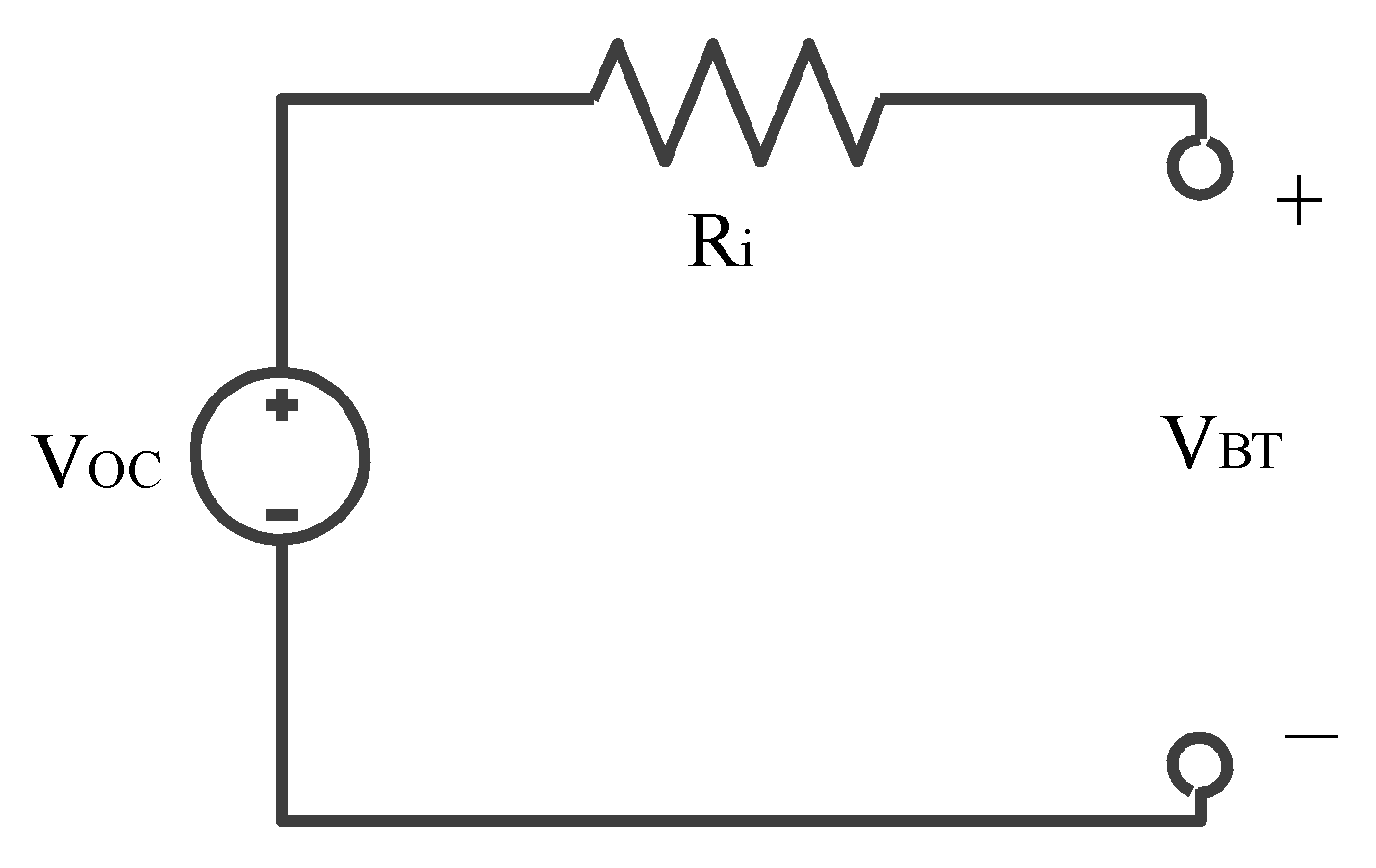
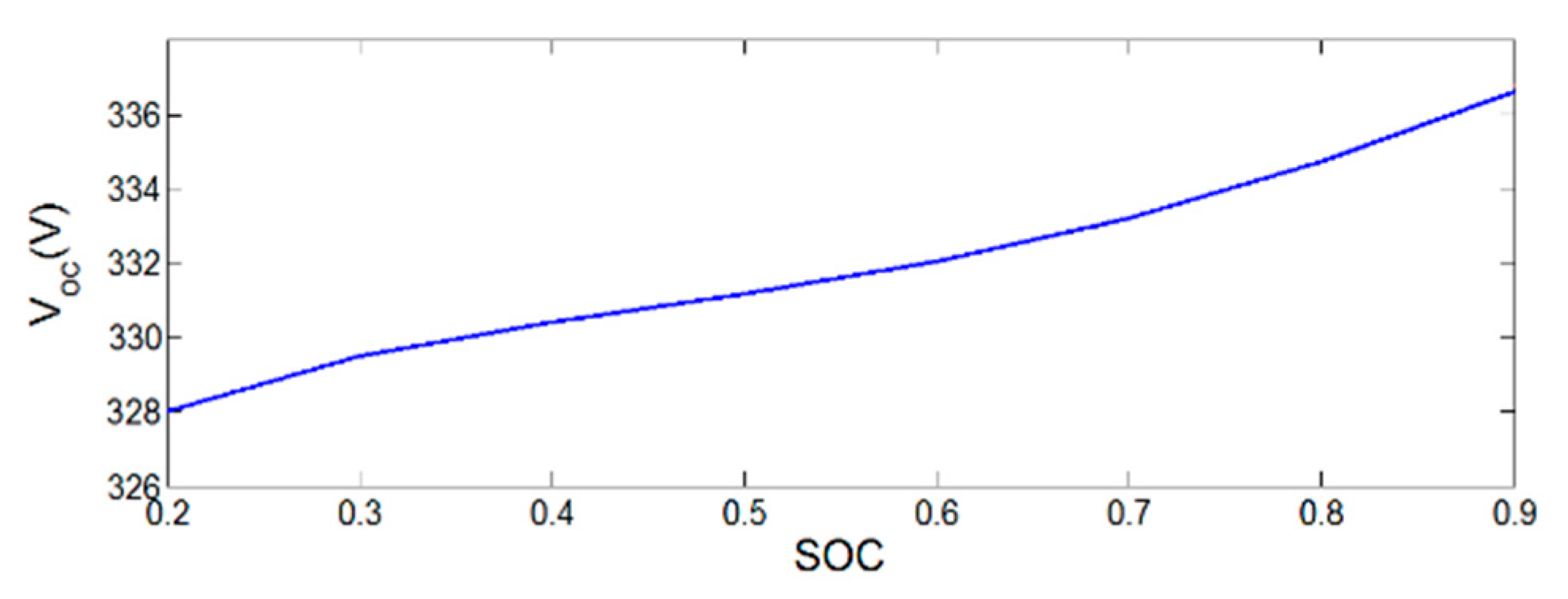
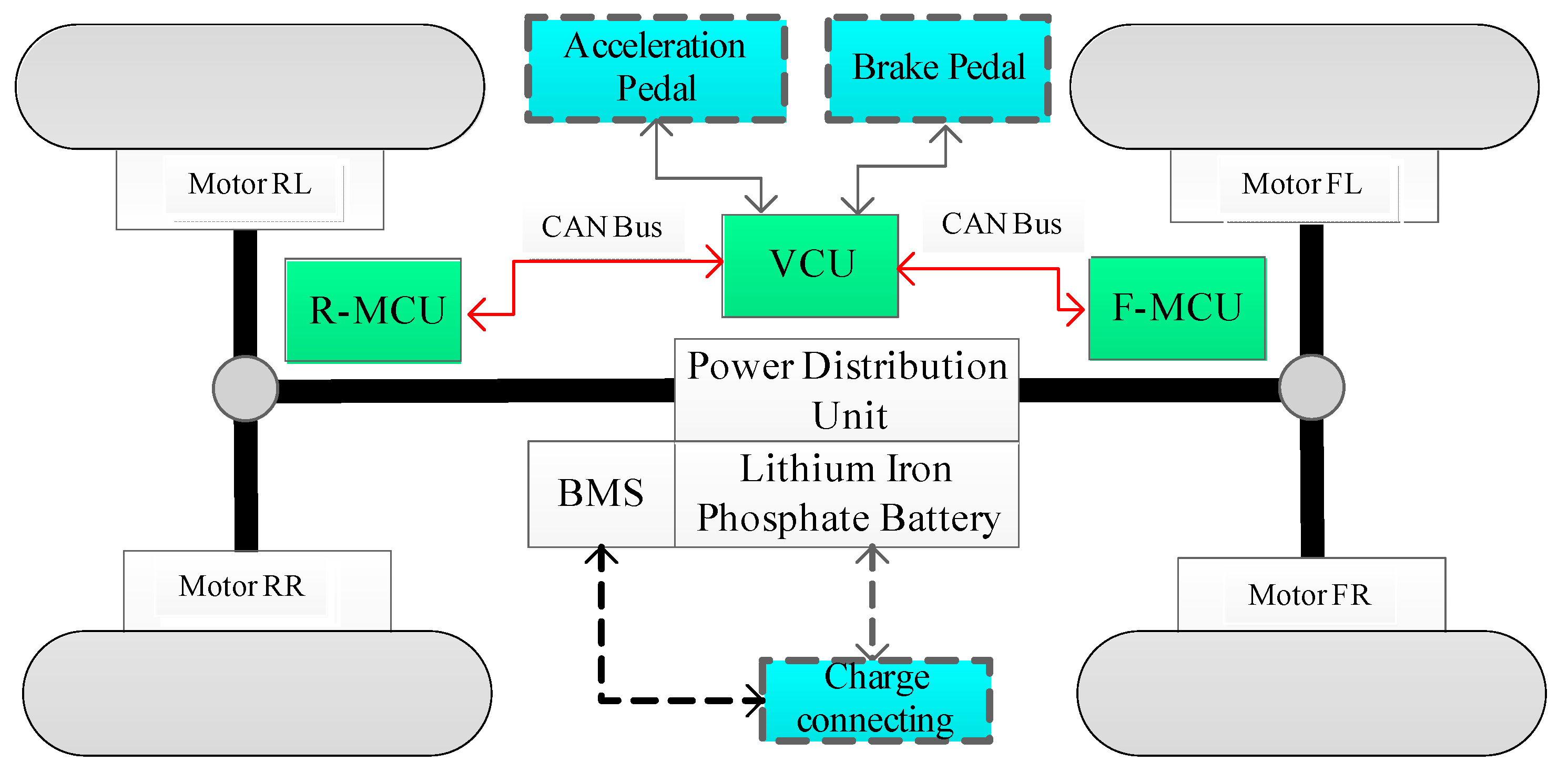

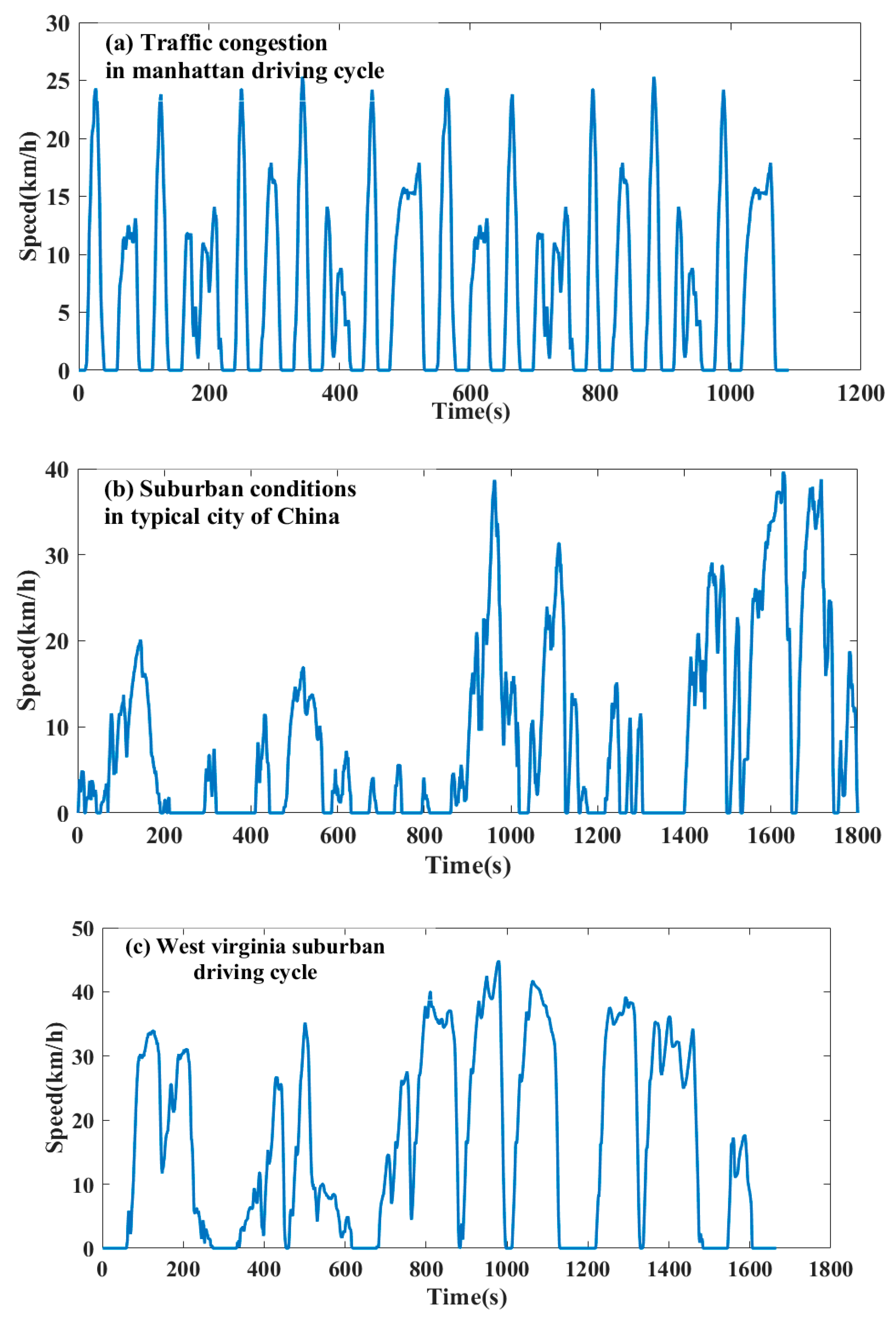
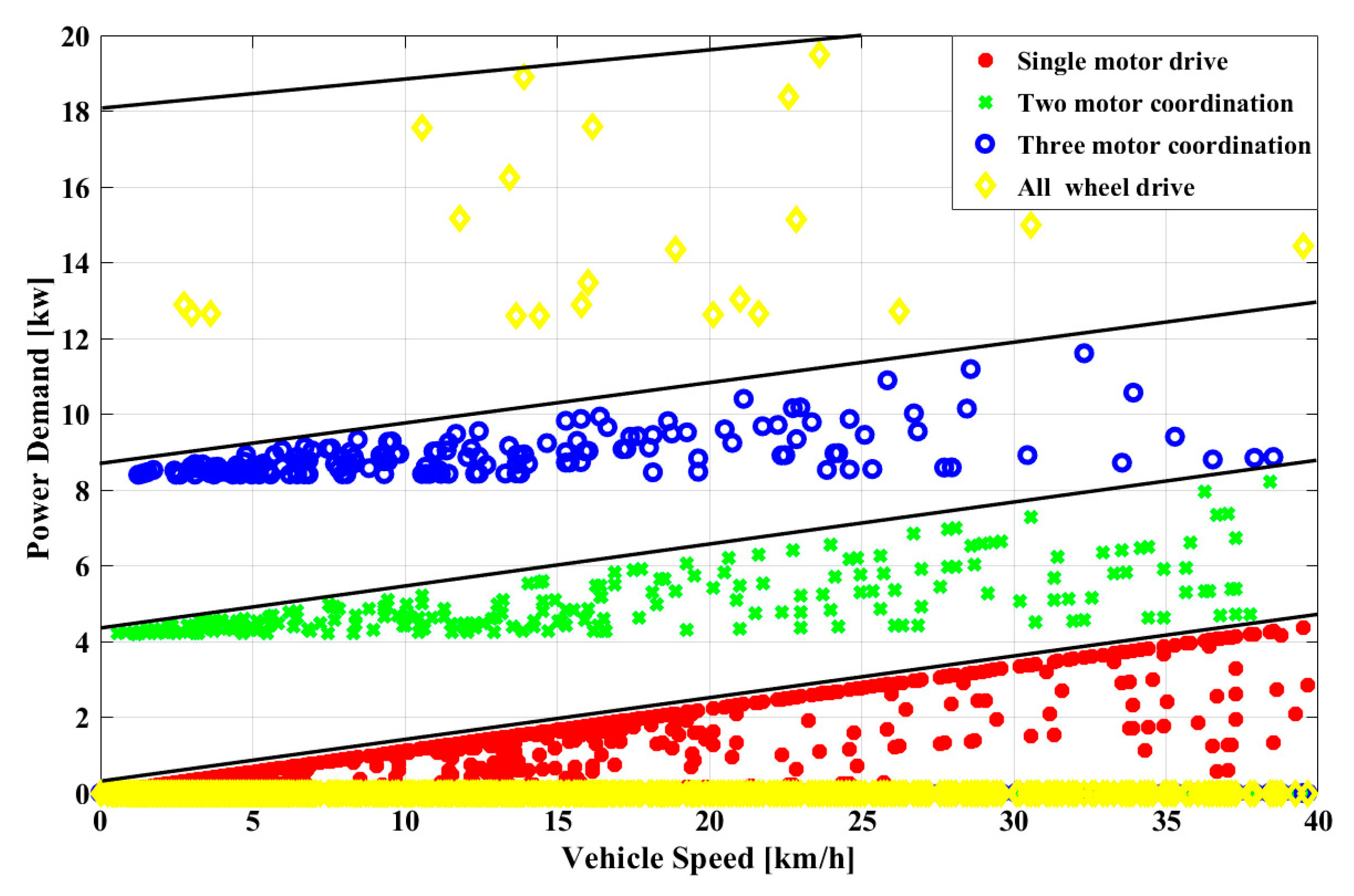



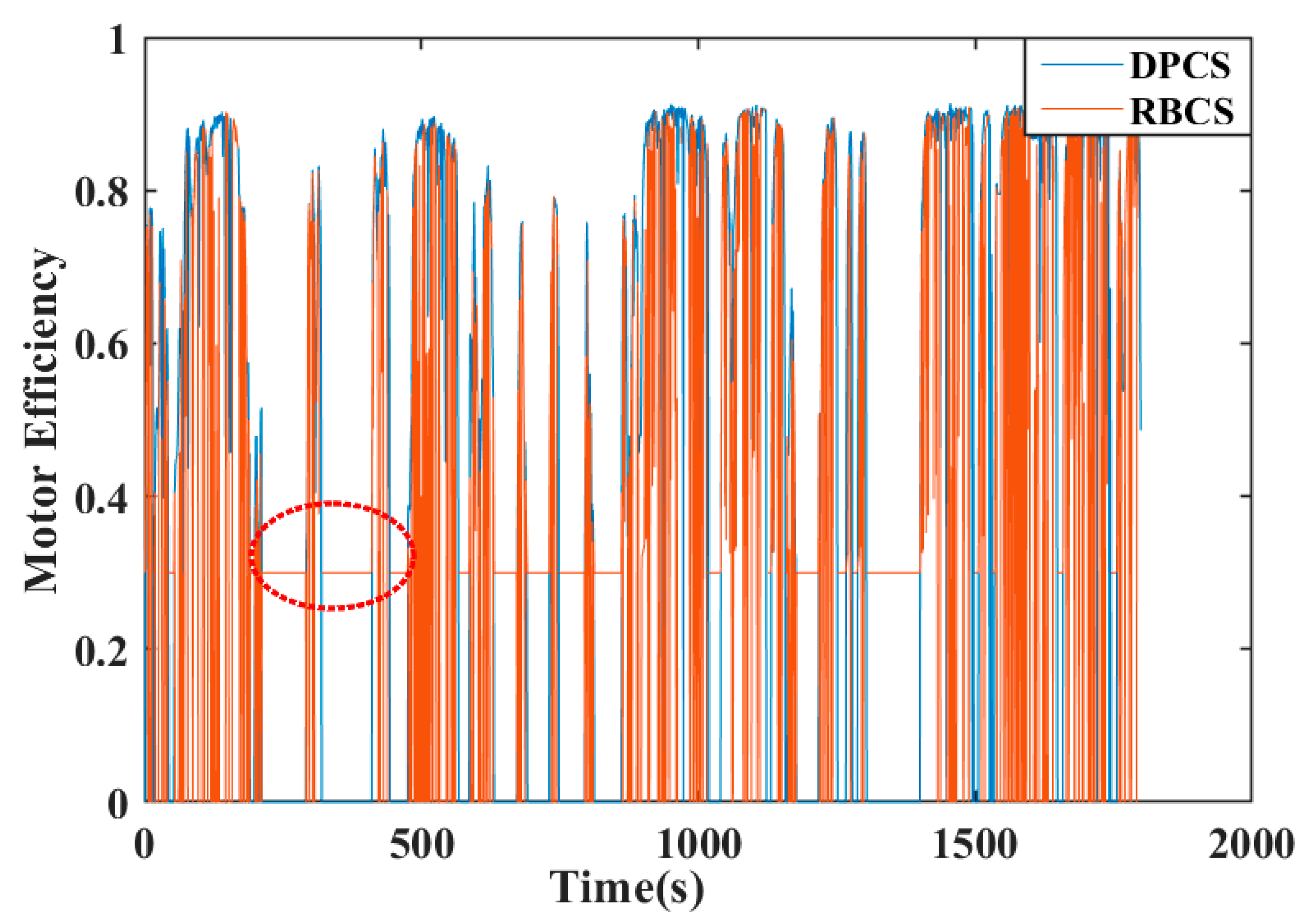
| Symbol | Parameter | Value/Unit |
|---|---|---|
| Te | Motor torque | Nm |
| Tdem | The final drive output torque | Nm |
| W | Wheel angular speed | Rad/s |
| v | Vehicle speed | m/s |
| m | Vehicle mass | 1890 kg |
| A | Vehicle lateral surface | 3.5 m2 |
| Cd | Aerodynamic coefficient | 0.73 |
| ρ | Aerodynamic resistance coefficient | 1.2 kg/m3 |
| Faer | Aerodynamic resistance | N |
| Pm | Rated power of the motor | W |
| Pdem | The output power of the final drive | W |
| r | Tire radius | 0.354 m |
| Rolling coefficient | 0.8% | |
| Efficiency of transmission | 0.90 | |
| Q0 | Maximum battery charge | C |
| SOC | Battery state of charge | |
| IBT | Electric current | A |
| PBT | Electric power of the battery | W |
| VOC | Open circuit voltage | V |
| Ri | The internal resistance of the battery | Ω |
| VBT | The voltage of the load | V |
| Operating Mode | Constraint of SOC | Constraint of Power | Torque Distribution |
|---|---|---|---|
| Front Driving Mode | ; ; | ||
| Front-rear Driving Mode | ; ; | ||
| All-Wheel Driving Mode | ; . |
Publisher’s Note: MDPI stays neutral with regard to jurisdictional claims in published maps and institutional affiliations. |
© 2021 by the authors. Licensee MDPI, Basel, Switzerland. This article is an open access article distributed under the terms and conditions of the Creative Commons Attribution (CC BY) license (https://creativecommons.org/licenses/by/4.0/).
Share and Cite
Dou, H.; Zhang, Y.; Fan, L. Design of Optimized Energy Management Strategy for All-Wheel-Drive Electric Vehicles. Appl. Sci. 2021, 11, 8218. https://doi.org/10.3390/app11178218
Dou H, Zhang Y, Fan L. Design of Optimized Energy Management Strategy for All-Wheel-Drive Electric Vehicles. Applied Sciences. 2021; 11(17):8218. https://doi.org/10.3390/app11178218
Chicago/Turabian StyleDou, Haishi, Youtong Zhang, and Likang Fan. 2021. "Design of Optimized Energy Management Strategy for All-Wheel-Drive Electric Vehicles" Applied Sciences 11, no. 17: 8218. https://doi.org/10.3390/app11178218





